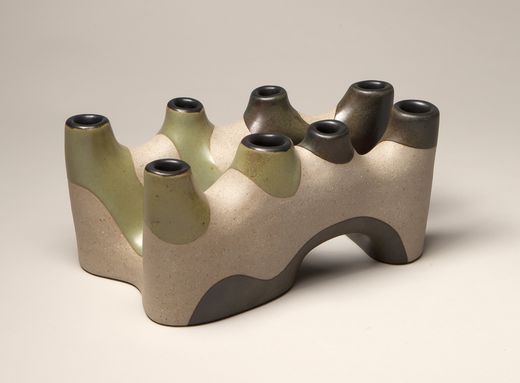

Mexico
• 1950
Biography
Born in 1950, Gustavo Pérez lives and works in Mexico. Between 1971 and 1973 he studied at the School of Art and Design in Mexico. He studied with Enrique Rangel, Felipe Barcenas and Martin Lima between1967-71 at the UNAM, Mexico.
Gustavo Pérez makes vessels that are simple, smooth and symmetrical. Their elegance is due to the precision of the incised lines and other markings on the pots. While using the same clay body--sand colored stoneware-- throughout his work, the artist achieves a wide range of form and pattern and includes slowly undulating walls beneath the subtly incised surfaces.
Part architecture, part mathematical pattern, and part lyrical movement, the sleek ceramic constructions were the subject of a major survey exhibition at the Museum of Modern Art in Mexico City.
Read more
Gustavo Pérez makes vessels that are simple, smooth and symmetrical. Their elegance is due to the precision of the incised lines and other markings on the pots. While using the same clay body--sand colored stoneware-- throughout his work, the artist achieves a wide range of form and pattern and includes slowly undulating walls beneath the subtly incised surfaces.
Part architecture, part mathematical pattern, and part lyrical movement, the sleek ceramic constructions were the subject of a major survey exhibition at the Museum of Modern Art in Mexico City.
Nationality
Discover the movements linked to Gustavo Pérez
Discover our selections of works by artists
Need help finding your favorite? Consult our selection pages made for you.
Need to know more?
When was Gustavo Pérez born?
The year of birth of the artist is: 1950




